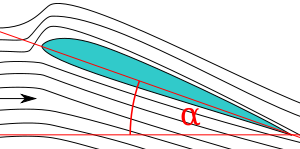Who here's an expert on aerodynamic physics terminology or likes to express ideas about it?
Can you throw a disc with an angle of attack? I am a little confused by how the term is used by Canadian Professor Vance Morrison in his description of a "Java Class for Calculating the Trajectory of a Frisbee." He says that in his studies, he simulating throwing a frisbee with various angles of attack, seven degrees and more.

Frisbee thrown at 10 degrees "Angle of Attack"
According to Wikipedia, however, 'angle of attack' is a measure of the chord of the disc to the direction of travel. Discs are generally thrown with very little or ideally no angle between the chord and the direction of travel. The angle, or pitch, is measured by the chord of the disc to the earth.

I am interested in knowing if they have different terms in Canada or if there might be other reasons or explanations why it might not be in error to simulate frisbee flight using physics based on an angle of attack.

Can you throw a disc with an angle of attack? I am a little confused by how the term is used by Canadian Professor Vance Morrison in his description of a "Java Class for Calculating the Trajectory of a Frisbee." He says that in his studies, he simulating throwing a frisbee with various angles of attack, seven degrees and more.

Frisbee thrown at 10 degrees "Angle of Attack"
According to Wikipedia, however, 'angle of attack' is a measure of the chord of the disc to the direction of travel. Discs are generally thrown with very little or ideally no angle between the chord and the direction of travel. The angle, or pitch, is measured by the chord of the disc to the earth.

The arrow is the vector representing the velocity of the air in the free stream around a stationary two-dimensional section of airfoil. The upper red line is the chord line of the airfoil and the lower red line is parallel to the arrow. The angle α is the angle of attack.
-- Wikipedia, Angle of Attack.
I am interested in knowing if they have different terms in Canada or if there might be other reasons or explanations why it might not be in error to simulate frisbee flight using physics based on an angle of attack.
